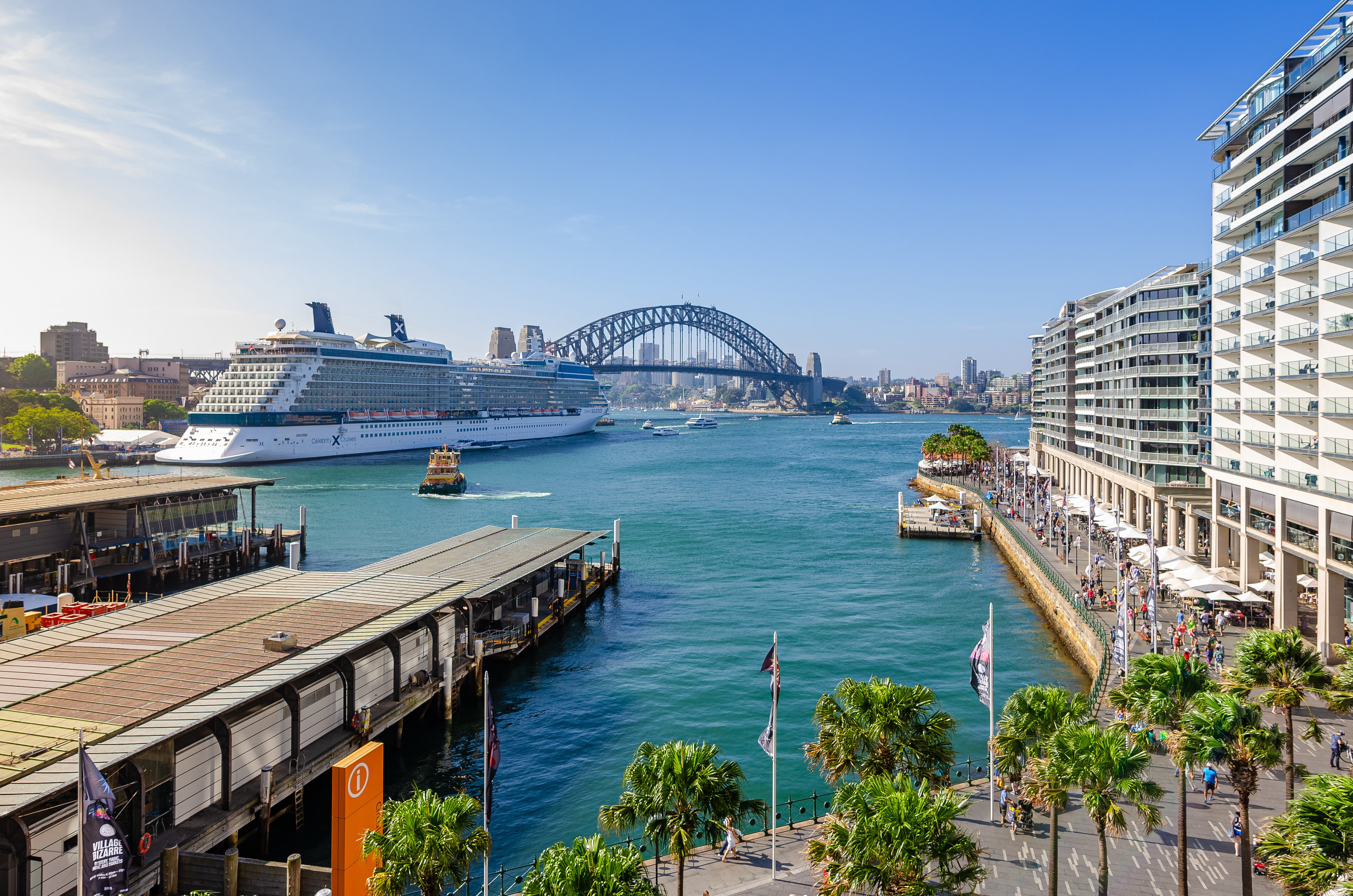Features > Property News & Insights > Housing Trends
What’s Behind Australia’s Economic Growth and Higher Property Prices?

Many Australians would argue that 2023 has been a pretty gloomy year.
Inflation has meant higher prices at the supermarket, petrol bowser and hairdresser, and much bigger repayments for households with a mortgage as the Reserve Bank has progressively hiked up interest rates.
For businesses, there have been higher input costs, supply chain problems and difficulties sourcing staff.
Despite all that, figures from the Australian Bureau of Statistics this week showed that the country’s economy grew by 2.1% over the past year.
Growth was a weak 0.2% in the September quarter - well below market expectations.
But some upward revisions of numbers in previous quarters helped produce an annual growth rate that’s surprisingly healthy when compared to other nations.
While acknowledging that many are doing it tough because of higher mortgage repayments, Treasurer Jim Clamers told a press conference in Canberra that, “our economy grew faster than most of the major advanced economies through the year to the September quarter; faster than Germany, the UK, France, Canada and Italy.”
The secret sauce in Australia’s economic success

The real story of Australia’s economic growth - and why many people rightly feel that they are doing it tough - is told in the second line in the table above.
Economic growth per capita, or per person, has actually gone backwards; -0.4% in the September quarter and -0.3% over the past year.
In fact, the figures clearly show that Australia is in a recession when it comes to per capita GDP. (A recession is defined as two or more quarters of negative economic growth)
So if Australians, as individuals, are going backwards economically, why is the country as a whole moving forward?
The answer is simple: extremely strong population growth.
“We've had over half a million people who likely have moved here over the past financial year,” says HSBC Australia Chief Economist, Paul Bloxham.
“And that's a lot more than expected.”
“But it also means that those people are also consuming, so they're driving a bit more of the consumer spending in the economy.”
“And so the net of that is that you see this fall in per capita indicators…fall in per capita consumption..fall in per capita GDP.”
“But overall the economy is still growing - it's still growing at a fairly solid clip.”
“And that's because it's been largely supported by the fact that we've got just more people coming into the economy.”
The RBA governor Michele Bullock recently admitted the central bank had underestimated the impact of high population growth on the Australian economy.
“We’ve been surprised a little bit by the strength of (economic) activity,” she told an audience of central bankers in Hong Kong.
“It’s held up a little better than we thought.”
ABC Finance presenter Alan Kohler thinks that’s an understatement.
“The economy is tremendously strong and…is resilient in the face of a huge amount of rate hikes,” he says, but adds that, “Australia's economic growth is entirely due to immigration.”
Property prices
Monetary policy may be working in terms of bringing down Australia’s high inflation, but 13 increases in the cash rate since May last year by the central bank have largely been shrugged off by the property market.
Recent data from CoreLogic showed that national home values fell 7.5% between May 2022 and January this year, before rebounding strongly to reach a new all-time high in late November.
This tends to suggest that the traditional view of a connection between higher interest rates and falling home prices in Australia has been shelved and that there are now other factors at play.
This chart shows that net migration has surged to an all-time post-war high.

At the same time, residential building approvals have fallen to their lowest point in 5 years, compounding an already chronic housing shortage.

It’s these factors - unprecedented population growth - and a more long-term decline in home building in Australia, that have seen national property prices seemingly defy economic gravity.
As interest rates have risen again and again, home values have gone up, not down.
And even though Australia is in the depths of a per capita recession, rents and property prices have risen, not fallen.
There have been some suggestions lately that Australia has already reached “peak migration” and that numbers will begin to ease, particularly as the visas of around a quarter of a million former international students start to expire.
But that hasn’t stopped a number of forecasters, including Neoval, Domain and KPMG, from releasing bullish residential property outlooks.
KPMG is tipping house prices in Australia’s capital cities will rise on average by 4.9% this financial year, before soaring to 9.4% growth in 2024-25, while apartment prices will see an average rise of 3.1% by next June, then a 6% increase across the next 12 months.
“Despite high interest rates, constrained supply will likely dominate the factors influencing property prices in the short term”, says KPMG’s Chief Economist Brendan Rynne.
Dr Rynne says the supply problem will combine with a range of other issues, including “higher demand due to heavier migration,” to keep pushing property prices up.
Stay Up to Date
with the Latest Australian Property News, Insights & Education.




.png?width=292&height=292&name=Copy%20Link%20(1).png)
 SIGN UP FOR FREE NEWSLETTER
SIGN UP FOR FREE NEWSLETTER








.jpg?width=1920&height=1080&name=Warning%2c%20You%20Might%20Be%20Facing%20Higher%20Taxes%20Soon%20(1).jpg)





.png?width=1920&height=1080&name=Rate%20Drops%20Signal%20BIGGEST%20Property%20Boom%20in%20DECADES%20(1).png)

.jpg?width=1920&height=1080&name=Labor%20vs%20Liberal%20These%20Housing%20Policies%20Could%20Change%20the%20Property%20Market%20Forever%20(1).jpg)
.jpg?width=1920&height=1080&name=QLD%20Slashes%20Stamp%20Duty%20Big%20News%20for%20Investors%20%26%20Home%20Buyers%20(1).jpg)
.jpg?width=1920&height=1080&name=Trump%20Just%20Slapped%20Tariffs%20%E2%80%93%20Here%E2%80%99s%20What%20It%20Means%20for%20Australia%20(1).jpg)
.jpg?width=1920&height=1080&name=Federal%20Budget%202025%20More%20Debt%2c%20No%20Housing%20%E2%80%93%20Here%E2%80%99s%20What%20You%20Need%20to%20Know%20(1).jpg)
.jpg?width=1920&height=1080&name=Australias%20Housing%20Crisis%20is%20about%20to%20get%20MUCH%20Worse%20(New%20Data%20Warns).jpg)
%20(1).jpg?width=1920&height=1080&name=Australias%20RENTAL%20CRISIS%20Hits%20ROCK%20BOTTOM!%20(2025%20Update)%20(1).jpg)
%20(1).png?width=1920&height=1080&name=Is%20Adelaide%20Still%20a%20Good%20Property%20Investment%20(2025%20UPDATE)%20(1).png)
.jpg?width=1920&height=1080&name=RBA%20Shocks%20with%20Rate%20Cuts!%20What%E2%80%99s%20Next%20for%20Property%20Investors%20(1).jpg)
%20(1).jpg?width=1920&height=1080&name=I%20Predict%20The%20Feb%20Rate%20Cut%20(My%20Price%20Growth%20Prediction)%20(1).jpg)
.png?width=1920&height=1080&name=Why%20Property%20Prices%20Will%20Rise%20in%202025%20Market%20Predictions%20(1).png)
.jpg?width=1920&height=1080&name=Why%20Investors%20Are%20Choosing%20Apartments%20Over%20Houses%202%20(1).jpg)
.jpg?width=1920&height=1080&name=Why%20Rate%20Cuts%20Will%20Trigger%20A%20Property%20Boom%20(1).jpg)
.jpg?width=1920&height=1080&name=Retire%20On%202Million%20With%20One%20Property%20(Using%20SMSF).jpg)
.jpg?width=1920&height=1080&name=4%20Reasons%20Why%20You%20Should%20Invest%20in%20Melbourne%20Now%20(1).jpg)
%20(1).jpg?width=1920&height=1080&name=Old%20Property%20vs%20New%20Property%20(Facts%20and%20Figures%20Revealed)%20(1).jpg)
%20(1).jpg?width=1920&height=1080&name=Will%20The%20New%20QLD%20Govt%20Create%20a%20Property%20Boom%20or%20Bust%20(My%20Prediction)%20(1).jpg)
%20Scott%20Kuru%20(1).jpg?width=1920&height=1080&name=Inflation%20Hits%20Three-Year%20Low%20(Will%20RBA%20Cut%20Rates%20Soon)%20Scott%20Kuru%20(1).jpg)
.jpg?width=1920&height=1080&name=How%20to%20Buy%20Investment%20Property%20Through%20SMSF_%20The%20Ultimate%20Guide%20(1).jpg)
.jpg?width=1920&height=1080&name=Victoria%20Slashes%20Stamp%20Duty%20Melbourne%20Set%20to%20Boom%20Scott%20Kuru%20(1).jpg)
.png?width=1571&height=861&name=Are%20Foreign%20Buyers%20Really%20Driving%20Up%20Australian%20Property%20Prices%20(1).png)
.jpg?width=1920&height=1080&name=The%20Single%20Factor%20That%20Predicts%20Property%20Growth%20Regions%20(1).jpg)
%20Scott%20Kuru%20(1).jpg?width=1920&height=1080&name=My%20Prediction%20On%20Rates%20%26%20Negative%20Gearing%20(Market%20Crash)%20Scott%20Kuru%20(1).jpg)

-1.png?width=1920&height=1080&name=Major%20Banks%20Cut%20Rates%20Will%20RBA%20Follow%20Suit%20(Sept%20Rate%20Update)-1.png)
%20Scott%20Kuru-1.png?width=1920&height=1080&name=Rate%20Cut%20Coming%20What%20New%20Zealands%20Move%20Means%20for%20Australia%20(Sept%20Prediction)%20Scott%20Kuru-1.png)
%20(1).jpg?width=1920&height=1080&name=Buy%20when%20the%20interest%20rates%20are%20high!%20(Why%20you%20must%20buy%20now!)%20(1).jpg)
.jpg?width=1920&height=1080&name=Carms_Revised%20Taxes%20Due%20Aug%209%20YT%20Thumbnail02%20(1).jpg)
.jpg?width=1920&height=1080&name=Carms_Too%20Little%20Too%20Late%20Aug%207%20YT%20Thumbnail01%20(1).jpg)









.jpg?width=1920&height=1080&name=Carms_Rate%20Drop%20In%20July%20Jun%2010%20YT%20Thumbnail02%20(1).jpg)
.jpg?width=1920&height=1080&name=Carms_Own%20a%20Property%20V6%20Jun%205_YT%20Thumbnail%20(1).jpg)









.png?width=1920&height=1080&name=Artboard%201%20(3).png)






.jpg?width=1920&height=1080&name=YT%20thumbnail%20%20(1).jpg)

